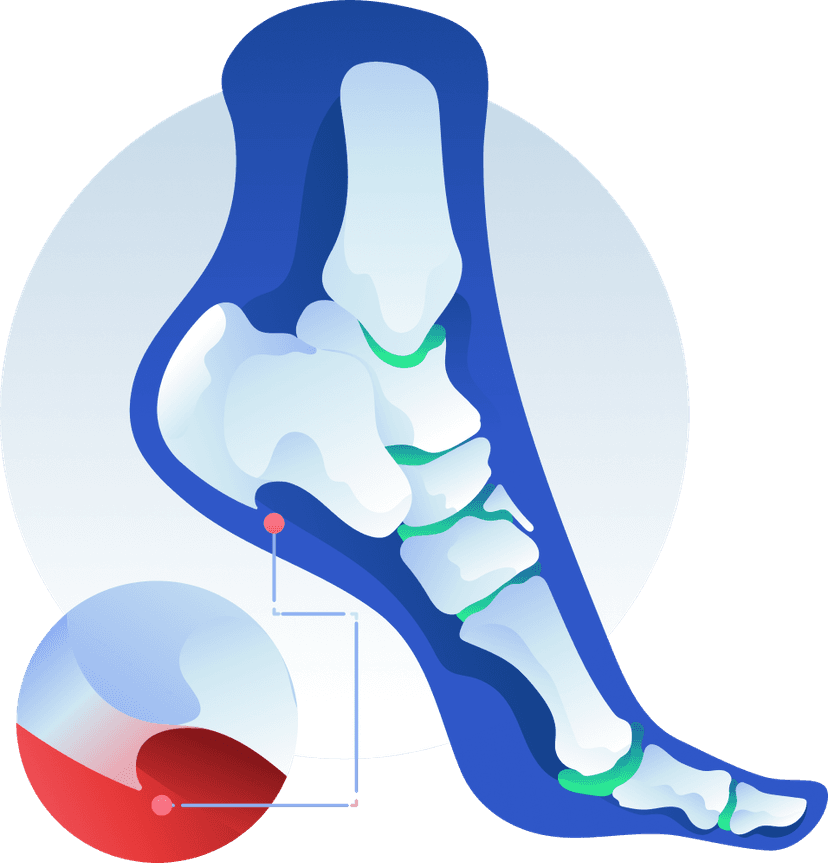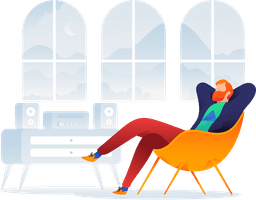
Heel Spurs: Symptoms, Causes and Treatment
Heel spurs
Written by
Friðrik Ellert Jónsson
Last updated June 26, 2023
Are you experiencing sharp, stabbing pain in your heel that's causing discomfort and limiting your activity? You might be suffering from heel spurs, a common condition where a small bone protrusion forms on the heel bone. In this article, we'll explore the symptoms, causes, and treatment of heel spurs.
Jump to
What are heel spurs?
Heel spurs are a common condition where a small bone protrusion forms on the heel bone. They are often associated with plantar fasciitis, a condition that causes pain in the heel and the bottom of the foot. While many people are diagnosed with heel spurs, research has shown that they do not actually influence the development or prognosis of heel pain. In fact, many people have heel spurs without any symptoms.

Heel spur symptoms
As mentioned, many people have heel spurs without any symptoms. However, some people may experience pain or tenderness in the heel area, particularly when standing or walking. The pain is usually described as a sharp or stabbing sensation that is worst in the morning or after prolonged periods of sitting or standing, but it can also occur after walking or running. For some, the pain tends to fade during activity and then get worse after stopping. Others might experience it as a dull ache that gradually gets worse during activity.
What causes heel spurs?
The causes of heel spurs are unclear. It’s thought they may be caused by long-term load on the plantar fascia and muscles of the foot, which can lead to the formation of a small bone protrusion on the heel bone.
Risk factors
There are several factors that can increase your risk of developing heel spurs, including:
- A high body mass index
- A sudden increase in activity, such as walking or running
- Spending a lot of time on your feet
- Tight calf muscles
- Excessive foot pronation
Heel spur treatment
Since heel spurs do not influence the development or prognosis of heel pain, they are typically treated the same way as plantar fasciitis, with active rehabilitation. This involves exercises to strengthen and stretch the muscles of the foot, as well as other treatments such as load management and taping.
In some cases, more invasive treatments may be necessary, such as shockwave therapy or corticosteroid injections. However, these treatments should only be considered after other conservative treatments have been tried and failed.
Conservative treatment
- Exercises
- Load management
- Taping
- Foot orthoses
- Night splints
More invasive treatment
- Shockwave therapy
- Corticosteroid injections
Exercises for Heel spurs
There are several exercises you can do to alleviate pain and improve your overall foot health. The most important exercises are stretches, strength and release exercises for the plantar fascia, calf muscles and other muscles of the foot. If you're looking for specific exercises to alleviate your pain, I've written an article that covers the 7 most important exercises, I recommend you check it out.
It's important to note that doing the exercises a few times will most likely not lead to any measurable results. You have to stay consistent and do them for weeks or even months to see significant improvement, as rehabilitation from heel spurs and plantar fasciitis most often takes 3 to 6 months. If you're ready to start a personalized rehabilitation program, download the Euneo app today to get started.
Get started for free
Start your rehabilitation journey with the Euneo app today. Get started for free with our 7-day trial.
How long is it going to take to get better?
Most people will experience relief or complete resolution of symptoms within 3 to 6 months of rehabilitation. It’s common to see an immediate decrease in pain when starting the program, but it might take longer for some. If you still experience pain or limitations after completing the program I recommend that you seek help from a medical professional.
Long term complications of heel spurs
It's crucial to pay attention to your body when dealing with heel spurs and plantar fasciitis. Disregarding the warning signs can result in a chronic condition that may restrict physical activity, ultimately lowering your health and quality of life. Additionally, trying to avoid pain by changing your walking posture can cause issues in your feet, knees, hips, or back. That's why it's essential to take the necessary measures to manage the condition as soon as possible.
Hundreds of success stories
Empowering hundreds of people all over the world to take an active role in their recovery.
When I started I was unable to participate in sports without significant foot pain afterwards. Now I'm back doing my usual activities with minimal discomfort.

Gene Shannon
Canada
I've been dealing with Plantar fasciitis pain for so long and have tried everything. After four weeks of the program the pain is almost completely gone. I even started hiking again!

Eliza Ching
United States
Checking off the exercises and getting notified makes it so easy to stay accountable. I made tremendous progress and was back to training in just a couple of weeks.

Patrik Gunnarsson
United Kingdom
Articles
Our programs and articles are made by medical professionals and are based on decades of clinical experience and research.


Plantar Fasciitis Symptoms, Causes, and Treatment
Are you experiencing heel pain when you take your first steps in the morning or after standing or walking for a long time? You might be suffering from plantar fasciitis, a common foot condition affecting millions of people around the world. In this article, we'll explore the symptoms, causes, and treatment of plantar fasciitis.
Read more

What Not to Do With Plantar Fasciitis
Plantar fasciitis can be a debilitating condition that affects the quality of your daily life. It can prevent you from doing the things you love, like running, hiking, or even just walking comfortably. Unfortunately, there is no quick fix for plantar fasciitis, and many people fall into the trap of ineffective treatments that only provide short-term relief. In this article, we will discuss what not to do when dealing with plantar fasciitis, so you can avoid wasting your time and get on track to long-term relief.
Read more
